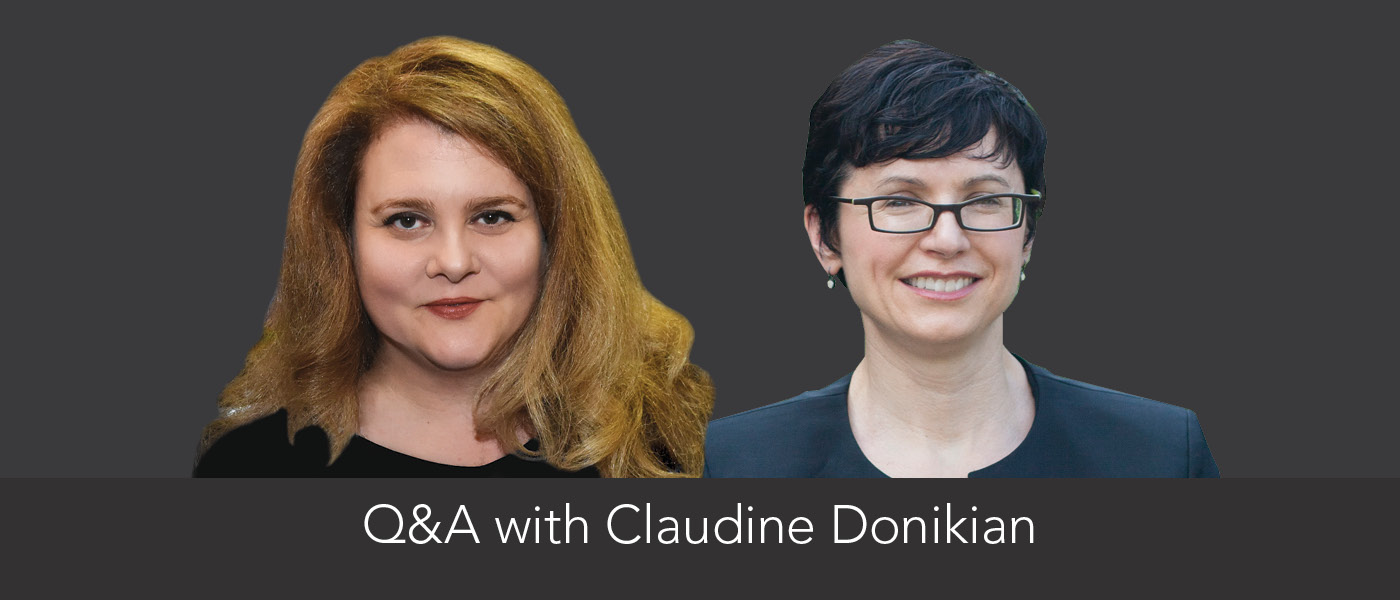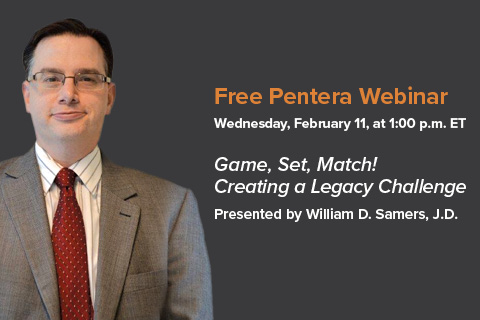
The Pentera Blog
Claudine and Meaghan Hogan of Marts & Lundy Discuss Stewardship, Coordinating with Major Gifts, and How Nonprofits Have Handled COVID-19
Pentera CEO Claudine Donikian recently spoke with Meaghan R. Hogan, J.D., LL.M., senior executive for advancement and development at Marts & Lundy, who previously worked in gift planning and development at the University of Pennsylvania, Temple University, and Emory University.
Many nonprofits have no stewardship plan
Claudine: Meaghan, it's great to be speaking with you today. It's my understanding that you have done some interesting work regarding stewardship of donors and regarding how the gift planning office can better work with major gift fundraisers and others in development. Plus, you coordinated a Marts & Lundy survey about nonprofit response to COVID-19. Let's start with stewardship; we have found in working with clients that many organizations don't have a clear stewardship plan.
Meaghan: That is so true, unfortunately. It is common that we see people who have committed a principal gift to their estate plan and are not being stewarded as well as they could be. Very few donors can give as much in life as they can at death; those gifts may not arrive for some time, depending on the age of the donor. Charities need to have a clear stewardship plan. It's crazy not to. It's just good business.
Claudine: I agree. When you make a large gift to an organization that you care about, it's implied that it's not a transaction and there should be a more meaningful relationship. Ideally, nonprofits would continue to celebrate the donors and their gifts so that the donors know how much they are appreciated.
Meaghan: And if you are stewarding well, annual gifts go up after making a planned gift.
Claudine: That is exactly our experience, and research has always backed that up. The Lilly Family School of Philanthropy at Indiana University did research way back in 2007 showing that donors who make planned gifts end up giving double in annual gifts.
Meaghan: When I started my position at Penn as a director of gift planning, I kind of made things up as I went along. I was assigned to support the Central Major Gifts team and told "these are your prospects." There were about 10,000 alumni assigned to that team rated with a capacity to make a gift of $100,000 or above outright. About 500 of them were in the gift planning legacy society. So I started to make stewardship calls to those legacy society members, partly out of a lack of knowing what better to do. And I started to find dozens of people who had made planned gifts who could make a major gift outright. I helped that team close several $100,000+ major gifts. It was an incredibly fruitful exercise and pretty much by accident. I just asked myself, "Who are your customers right now, and what are you doing with them?" And my answer was to start reaching out to the closest level of circles around us, and that stewardship led to major gifts.
Claudine: Nonprofits should ask themselves: If we doubled our marketing budgets with the goal to steward, how many more gifts would we receive? We are finalizing our latest whitepaper that is on justifying the planned giving marketing budget. So many nonprofits think nothing of cutting planned giving marketing, and not just when there is a down economy. They are probably not stewarding those donors once the donors make a commitment. But if you actually want the gift to mature, it is in your best interests to steward them—and marketing can be a cost-effective way to help with stewardship as well.
Meaghan: Yes. A deferred gift is unusual in that it is the only principal gift you can make without ever talking to the charity. Every time a huge planned gift matures, many people see it as an outlier—and not as the result of years of strategic work. Gifts may come from people you don't know, but they are statistically in some relation to your organization. So how am I stewarding my unknown principal gift donors? By marketing as you describe.
A team-approach to bridging planned giving and principal gifts
Claudine: You talked a moment ago about reaching out to planned giving donors and getting principal gifts almost by accident, but you also have created teams to execute the relationship between gift planning and principal gifts. Tell me about that.
Meaghan: I surveyed best practices at other institutions, and after that I created a principal gifts team. It included the head of gift planning, the primary gift officer, the head of stewardship, sometimes the dean or a faculty member if they were involved, our vice president for advancement, and me. We would have this team around the table and read a particular gift agreement. The head of stewardship would describe how we were fulfilling what we promised—what was going back to that donor. It's a way of putting people in the room together so they can have a conversation in person and come out with a strategy to create better stewardship.
Infrastructure is important, too. Our naming policy at Temple allowed a donor to put a name on something with one half of their gift made currently and one half deferred. I worked with a prospect who took advantage of this policy to create the impact she wanted to have, and the gift planning officer worked with me to create the structure of the deferred piece. The benefit to Temple, of course, was getting half of the gift upfront.
I think of there being three pillars to development, and that is the third pillar: the infrastructure, how the different offices are working together. The second pillar is marketing and stewardship, as we have discussed. And the first pillar is prospect management: how do we help the donors with whom we work make the greatest impact possible as efficiently as possible?
Counting gifts—the key to making management care about planned giving
Claudine: Tell us a little bit about your experience with the way planned gifts are counted.
Meaghan: When I first started, nobody cared about what I was doing because nobody was counting it! We tend to care about what we count. Now institutions have started counting revocable gifts, putting them in different buckets, and because of that everybody cares more about revocable gifts than they used to. Having a counting policy lets us recognize gift officers for their work and helps determine how to recognize donors.
Counting gifts also highlights for your organization's board of directors the impact these gifts will have—and, hopefully, the leadership will continue to invest in the program. That's good, because in my experience boards are not very engaged with gift planning.
Claudine: It really seems to depend on the organization. Some of our clients have to run their newsletter by the board—it is very engaged. But 95 percent of our base is mature organizations. We don't work with a ton of small places with beginning programs.
Meaghan: When gift planning doesn't engage with the board—and ask them for gifts—it's a lost opportunity. When you talk to board members, you are talking to the people closest to your organization who are most likely to treat you like family. That's the way I think of making a deferred gift—it's the donor treating you like family.
Claudine: To your point, many boards are not being asked for money; and they can be an extremely surprising untapped audience. One very prominent university did a huge planned giving campaign, and they realized there was so much opportunity that they had not tapped on the board. We supported them through their campaign and got them a ton of leads and new legacy society members.
Marts & Lundy COVID-19 national survey
Claudine: Pentera and Marts & Lundy have both done national surveys since the pandemic began. What sorts of strategies have you seen change recently, during COVID-19?
Meaghan: The survey I did with Marts & Lundy was for the National Association of Charitable Gift Planners, and we asked a series of questions about how gift planning has changed since the beginning of COVID. I was wondering: Is it appropriate to continue conversations and even solicit gifts when in a crisis that is both economic and existential? We were in this strange place because internet searches on how to write a will were way up, and estate planning attorneys had more business than they could handle. So how do we talk about this thing we're not sure we should talk about—but we know everybody is doing right now?
Claudine: Some nonprofits went into a panic mode when COVID started in the spring last year. In our national survey we found that nonprofits that didn't work with a marketing company were more likely to stop marketing. We quickly wrote a topic on the CARES Act, and the vast majority of our clients did that topic last spring—and only a few did estate planning. But it was interesting that no one got negative feedback from their spring newsletters, whatever topic they did.
Meaghan: What we saw in our survey was that there really hasn't been a need to change much. At least half of the organizations saw a steady rate of interest in making a gift commitment—and some saw an increase.
Claudine: It's really great how donors have responded during the pandemic and how nonprofits have continued to reach out to them. Thank you, Meaghan, for all of your insights.
Biography of Meaghan R. Hogan, J.D., LL.M.
Senior Executive, Advancement & Development
Marts & Lundy
As senior executive for advancement and development for the past year at Marts & Lundy, Meaghan Hogan works in strategic planning, donor relations, and consulting for nonprofits—including change management, transformative giving, principal & major gifts, training & mentorship, fundraising campaigns, high-net-worth relationships, and cross-functional teams.
As vice dean of institutional advancement at the University of Pennsylvania School of Veterinary Medicine, Meaghan led a team that raised $14 million in gift commitments within ten months (personally raising more than $3 million in outright and deferred gifts) and identified more than a thousand new prospects. She drove development, marketing and communications, alumni relations, annual fund, and stewardship while leading the board of overseers. She managed an annual operating budget of $1.7 million and 15 employees.
As associate vice president of principal gifts at Temple University, and prior to that associate vice president of principal gifts, Meaghan quintupled the size of the principal gifts program to $48 million, more than doubled annual fundraising for the College of Liberal Arts to $4 million, and helped win a 1st Keck Foundation grant of $1.2 million. She led the principal gifts program as well as all corporate and foundation relations, gift planning, and regional giving, and drove all fundraising activities for 12 schools. She launched the principal gifts program as well as corporate and foundation relations, gift planning, regional giving, and prospect research across Temple University. She managed a portfolio of about 40 principal/major gift prospects and 40-plus employees.
She previously worked as executive director of gift planning at Temple, Penn, and Emory University. She earned a master of laws (LL.M.) degree from Temple, a J.D. from Emory, and a bachelor's degree in English from Vassar.


